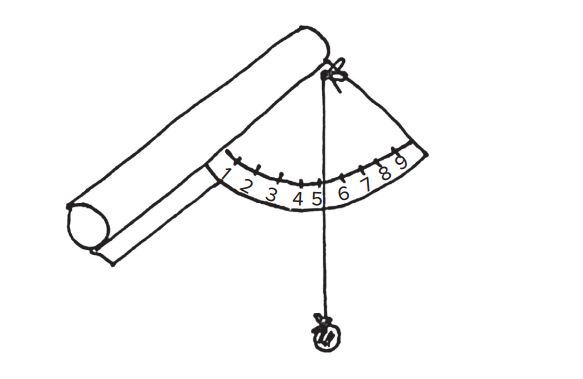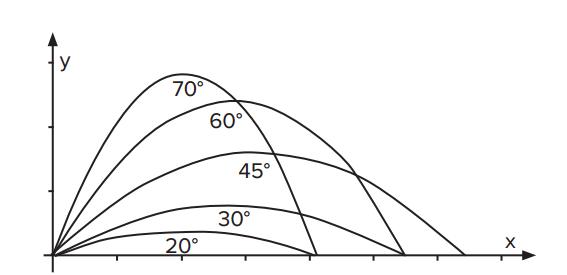



2 drawing papers, sticking tape/glue, string, weight (eg plasticine)
Pupils will construct a specific measurement tool. It is good to focus on the design of the tool itself and its use, so that the pupils understand what the meaning is in the following research. Therefore, the teacher, as soon as the research question is raised (How obliquely is it necessary to shoot the ball in order to reach it as far as possible?),discusses with the pupils how they can measure how the ball is obliquely thrown. Given the development of the science process, it is important to allow pupils in groups to try to design their own tools. If one of them is sufficiently objective, it is advisable to use the procedure proposed by the pupils.

If pupils do not develop their own tool, the teacher can propose the creation of a simplified tool by himself (see Picture). First, they cut out a quarter circle from the drawing, to which the numbers from 1 to 8 (as if at 10 ° to 90 °, i.e. to the right angle; they do not need to be justified by the children) are given at regular intervals. Best if the teacher prepares these neighborhoods for pupils, it will better ensure regular stretches of measured angles. Alternatively, it can give pupils a template to draw the scale over. Then make a roll from the next drawing and glue it so that the edge of the roll protrudes. It will stick to it the produced „protrusion“. They make a hole in the corner of the protractor and hang a string with a weight, such as a piece of plasticine (see picture). The lanyard is a direction pointer. When the roll is tilted differently, the number on which the hanging cord shows is also changing. Pupils can look through a roll at a particular object and determine at what angle (as oblique) they will shoot if they target the object.

When pupils are familiar with how to use the constructed tool, they can approach the research question: How obliquely is it necessary to fire the ball to keep it flying as far as possible? However, for the development of science ideas, it is interesting to encourage pupils to try to verify that the diagram given in Task 10 expresses really where the objects will fall if we throw them in different directions. The task thus leads pupils to „read“ the information with the diagram. Although the data is given in degrees of angles, it is very easy to convert these degrees to numbers on their own scale (eg, 20 ° = 2; 30 ° = 3, 90 ° = 9, etc.).